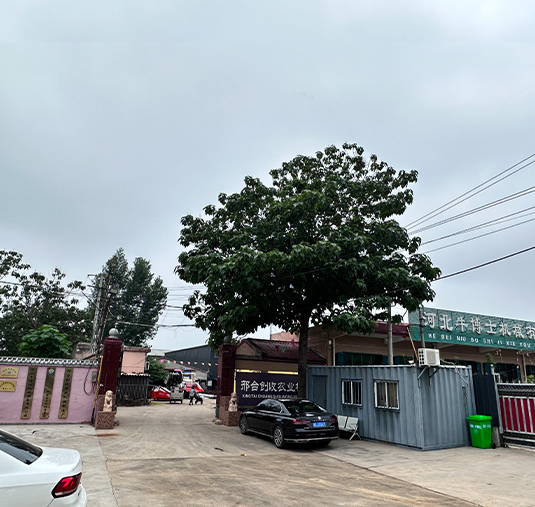forage harvester
The Evolution and Importance of Forage Harvesters in Modern Agriculture
Forage harvesting has long been an essential practice in agriculture, catering to the nutritional needs of livestock. As the demand for efficient farming methods increases, forage harvesters have evolved significantly, becoming indispensable machines for farmers across the globe. This article explores the significance, technological advancements, and future prospects of forage harvesters.
Understanding Forage Harvesters
Forage harvesters are specialized agricultural machines designed to cut, chop, and collect forage—such as grass, alfalfa, and silage—for animal feed. These machines not only save time but also enhance the quality of feed, ensuring that livestock receive the necessary nutrients for optimal growth and health. The primary goal of a forage harvester is to enable farmers to maximize their forage yields while minimizing manual labor.
Historical Context
Traditionally, forage harvesting was a labor-intensive process, relying heavily on manual labor and simple machinery like scythes and sickles. The evolution of mechanized harvesting began in the early 20th century with the introduction of the first self-propelled forage harvesters, which drastically improved efficiencies. Over the decades, advancements in technology have transformed these machines into sophisticated, multifunctional equipment capable of operating in diverse conditions.
Technological Advancements
Modern forage harvesters are equipped with an array of advanced features that enhance their performance. These include
1. Precision Cutting Technology Advanced cutting systems ensure clean cuts, which help in preserving the nutritional value of forage. Technologies such as computer-controlled knives and adjustable cutting heights allow for customization based on crop type and field conditions.
2. High Throughput Capacity Modern forage harvesters are designed for high throughput, enabling them to process large volumes of forage quickly. This is critical during harvest time when weather conditions can change rapidly.
3. Integrated GPS and Auto-steer Systems GPS technology helps farmers optimize field operations by providing accurate mapping and guidance. This minimizes overlap during harvesting, reduces fuel consumption, and maximizes efficiency.
forage harvester

4. Advanced Conditioning Systems Conditioning units improve the drying process of forage, allowing farmers to make high-quality silage more quickly. This is particularly important in regions with variable weather patterns.
5. Ease of Operation User-friendly interfaces and automated controls make it easier for operators to manage the harvester, reducing the learning curve for new users.
Economic and Environmental Impact
The use of forage harvesters has significant economic implications for farmers. By streamlining the harvesting process, farmers can save time and labor costs, leading to increased profitability. Furthermore, efficient forage harvesting aligns with sustainable agricultural practices. By optimizing the use of land and resources, these machines help in reducing waste and improving the overall productivity of the farm.
Moreover, the environmental impact of modern forage harvesters is increasingly positive. With features such as reduced fuel consumption and optimized cutting techniques, these machines help lower the carbon footprint associated with forage production. As the agricultural sector continues to face challenges related to climate change and resource sustainability, forage harvesters play a pivotal role in promoting environmentally friendly farming practices.
Future Prospects
The future of forage harvesters looks promising, with ongoing innovations on the horizon. As the agricultural industry moves towards increased automation and smart farming, forage harvesters are likely to be integrated with artificial intelligence and machine learning technologies. This could lead to even greater optimization of harvesting operations, predictive maintenance, and enhanced decision-making for farmers.
Additionally, as global populations grow and the demand for food increases, the efficiency offered by modern forage harvesters will be crucial in meeting these needs. Industries that rely on livestock production must adapt to ensure sustainability, and forage harvesters will be at the forefront of this transformation.
Conclusion
In conclusion, forage harvesters are a vital component of modern agriculture, reflecting advancements in technology and efficiency. They not only facilitate the harvesting process but also contribute to the economic viability and sustainability of farming. As technology continues to evolve, the role of forage harvesters will become increasingly significant, paving the way for a more efficient and environmentally friendly agricultural future. With their profound impact on both farmers and the agricultural sector, forage harvesters will continue to be essential tools in feeding the growing global population.
Latest news
-
Mini Combine Harvester for Soybean | Compact & Efficient Soybean Harvesting SolutionsNewsNov.24,2025
-
Mini Combine Harvester for Paddy – Compact, Efficient Rice Harvesting SolutionsNewsNov.24,2025
-
Mini Chain Harvester: Compact Forestry Solutions for Sustainable LoggingNewsNov.23,2025
-
Kartar Mini Harvester – Compact, Efficient Harvesting Machinery for Small FarmsNewsNov.23,2025
-
Compact Power: Elevate Your Farming with Harvesting Machine SmallNewsNov.22,2025
-
Discover the Power and Potential of Harvester Mini Combine Machines | Efficient Small-Scale HarvestingNewsNov.22,2025








